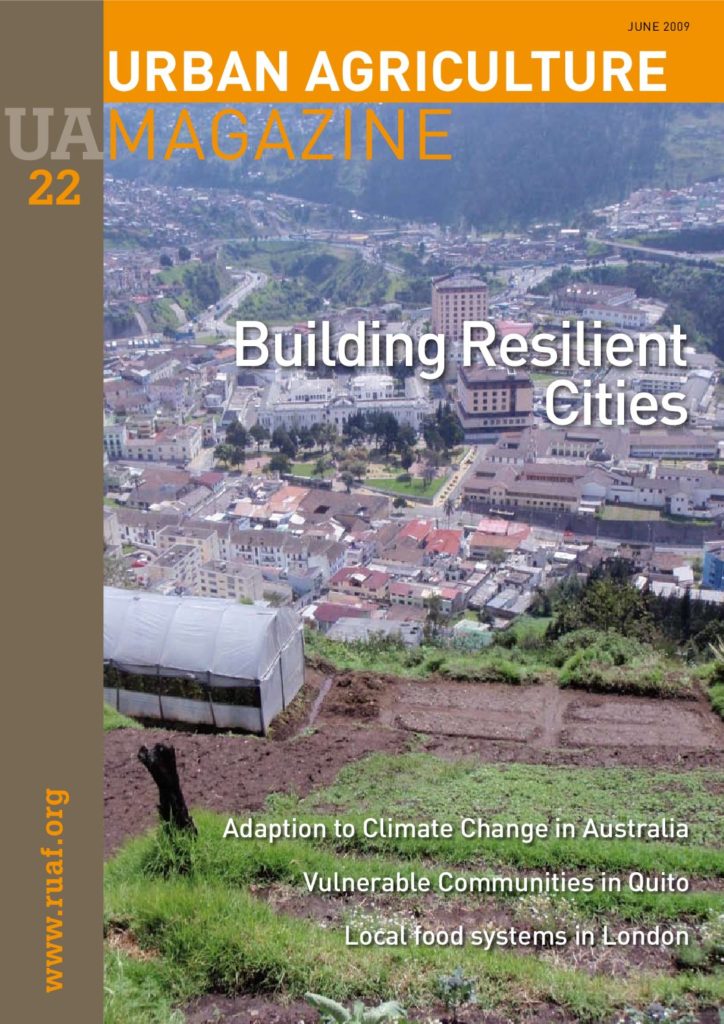The number of people around the world who live in cities is increasing steadily. For the first time in history the percentage of population that lives in cities has passed the 50 percent mark. These cities are quickly becoming the principal spaces for planning and implementation of strategies that aim to eradicate hunger and poverty. Many cities cannot cope with the rapid population growth and face enormous challenges in creating sufficient employment; in providing basic services; and in planning and managing urban wastes and waste water. In many cities, unstable economic and political situations or natural hazards aggravate this condition of vulnerability, for instance the growing scarcity of water, rapidly rising food prices, and climate change.
Resilient cities are cities that can effectively operate and provide services under conditions of distress. Resilient cities can better absorb the type of shocks and stresses as identified above. Rather than focusing on vulnerability, a focus on resilience means putting emphasis on what can be done by a city or a community itself, building on existing natural, social, political, human, financial, and physical capital, while at the same time strengthening its capacities.
Urban agriculture can play a role in building more resilient cities. Growing food in cities reduces the dependency on (rural) food supplies, which can easily be affected by disrupted transport, armed conflicts, droughts or flooding and increasing food prices. Apart from enhancing food security and reducing the ecological footprint, urban agriculture can also play a role in city greening and water management. Green spaces contribute to economic (energy) savings, or controlling storm water flows.
In this issue of the Urban Agriculture Magazine cases and experiences from countries such as Ecuador, China, Morocco and Portugal are discussed to show the potentials and restrictions of urban agriculture in building more resilient cities. The magazine addresses questions such as how urban agriculture can combat the negative impacts of rapidly rising food prices, how it can reduce a city’s ecological footprint and its role in adaptation to the effects of climate change, what should be the role of policies and institutions in the building of resilient cities.
This issue was compiled in collaboration with the Center for Resilient Cities and the World Bank.
Also available in Spanish, Portuguese, French and Arabic.
Contents:
- Urban Agriculture in Montevideo and Rosario: A response to crisis or a stable component of the urban landscape?
- Interview with Crispim Moreira
- Promoting Access to Food in Contagem, Brazil
- An Update from New Orleans
- Resilient Chinese Cities: Examples from Beijing and Shanghai
- Adapting to Climate Change and Building Urban Resilience in Australia
- Building the Resilience of Vulnerable Communities in Quito: Adapting local food systems to climate change
- Sustainable Development of Megacities of Tomorrow: Green infrastructures for Casablanca, Morocco
- Coping with Increasing Food Prices in Nakuru, Kenya: Urban school farming as a way to make school lunches affordable
- The Role of Urban Agriculture in the Re-socialisation of Homeless People: An Experience in Juiz de Fora, Brazil
- The Role of Urban Agriculture in Building Resilient Cities: Examples of building resilient neighbourhoods in London
- The Elephant and the Castle ; towards a London Edible Landscape
- Local Food System Develops Resiliency in Charlottesville
- Beyond Food Security: Urban agriculture as a form of resilience in Vancouver, Canada
- Carrot City: Designing for urban agriculture
- Agricultural Biodiversity Strengthening Livelihoods in Periurban Hyderabad, India
- Optimising Use of Water for Urban Agriculture: Responding to the challenge of growing water scarcity in Tunisia
- Urban Agriculture and Resilience in Lisbon: The role of the municipal government

